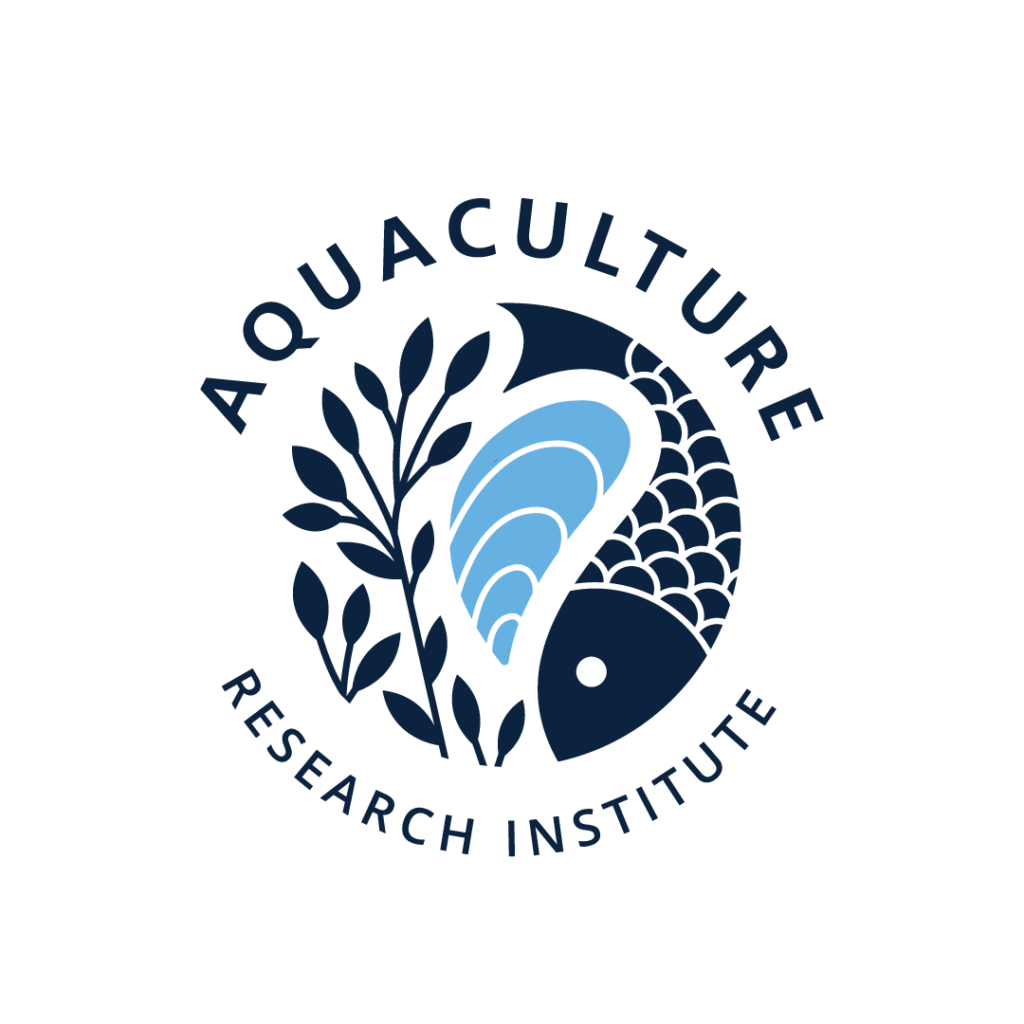Annual Report

2022
The Year In Review
The Aquaculture Research Institute serves Maine as a leader in aquaculture research, workforce development, and innovation with the goal of advancing a sustainable aquaculture future in Maine and beyond.
ARI pursues these four strategic goals

2022 Projects and Outcomes
ARI AREAS OF Impact
Diversity and
Inclusion
Promoting DEI throughout the organization and engaging with Wabanaki communities to facilitate participation in the aquaculture sector is important to ARI. Click here to learn more .
Growing Capacity and Expanding Partnerships
ARI has helped grow the industry locally through and economic development, and renovation and construction. Click here to learn more.
Research
Innovations
ARI received funding from many sources, resulting in successful projects ranging from larval nutrition to sea lice. Click here to learn more.
Publications
Suzanne L. Ishaq, Sarah M. Turner, M. Scarlett Tudor, Jean D. MacRae, Heather Hamlin, Joelle Kilchenmann, Grace Lee, Deborah Bouchard, May 2022. Many Questions Remain Unanswered About the Role of Microbial Transmission in Epizootic Shell Disease in American Lobsters (Homarus americanus), a perspective article, Frontiers in Microbiology, https://doi.org/10.3389/fmicb.2022.824950
St-Gelais, A. T., Fredriksson, D. W., Dewhurst, T., Miller-Hope, Z. S., Costa-Pierce, B. A., & Johndrow, K. (2022). Engineering A Low-Cost Kelp Aquaculture System for Community-Scale Seaweed Farming at Nearshore Exposed Sites via User-Focused Design Process. Front. Sustain. Food Syst. 6: 848035. doi: 10.3389/fsufs.
Coleman, S., St. Gelais, A., Fredriksson, D., Dewhurst, T., & Brady, D.C. (2022) Identifying scaling pathways and research priorities for kelp aquaculture nurseries using a techno-economic modeling approach. Frontiers in Marine Science. doi:0.3389/fmars.2022.894461
Leeman, C., Martin, E., Coleman, S., Gray, M.W. & Brady, D.C. (2022) The potential socio-environmental advantages of repurposing lobster impoundments for eastern oyster (Crassostrea virginica) aquaculture. Aquaculture. 554: 738130. https://doi.org/10.1016/j.aquaculture.2022.738130
Jiang, B., Boss, E., Kiffney, T.J., Hesketh, G., Bourdin, G., Fan, D., & Brady, D.C. (2022) Oyster aquaculture site selection using high resolution remote sensing: A case study in the Gulf of Maine, USA. Frontiers in Marine Sciences. https://doi.org/10.3389/fmars.2022.802438
Both, A., C. J. Byron, D. C. Brady, B. Costa-Pierce, L. M. Mayer and C. C. Parrish (2022) Solubilization of nutritional lipids from three coastal and estuarine primary producers using sodium taurocholate as a model surfactant to mimic typical consumer gut-fluids. Journal of Experimental Marine Biology and Ecology 548: 151686.
Farr, E.R., Johnson, M.R., Nelson, M.W., Hare, J.A., Morrison, W.E., Lettrich, M.D., Vogt, B., Meaney, M., Howson, U.A., Auster, P.J., Borsuk, F.A., Brady, D.C., Cashman, M.J., Colarusso, P. Grabowski, J.H., Hawkes, J.P., Mercaldo-Allen, R., Packer, D.B., Stevenson, D.K. (2021) An assessment of marine, estuarine, and riverine habitat vulnerability to climate change in the Northeast U.S. PLoS ONE 16(12): e0260654. https://doi.org/10.1371/journal.pone.0260654
Habte-Tsion, H.-M., Riche, M., Mejri, S., Bradshaw, D., Wills, P.S., Myers, J.J., Perricone, C.S., 2022. The effects of fish meal substitution by clam meal on the growth and health of Florida pompano (Trachinotus carolinus). Nature: Scientific Reports, 12, 7696.
https://doi.org/10.1038/s41598-022-11675-x
Asnake, W., Ulusoy, B.H., Habte-Tsion, H.-M., 2021. Spirulina phenolic compounds: A natural choice as a food additive with antifungal properties. International Food Research Journal, 28, 1109 – 1118 (published in Dec 2021).
Coleman, S., Morse, D., Brayden, W.C., & Brady, D.C. (2021) Developing a bioeconomic framework for scallop culture optimization and product development. Aquaculture Economics & Management https://doi.org/10.1080/13657305.2021.2000517
Hillyer, G., Liu, W., McGreavy, B., Melvin, G., & Brady, D.C. (2021) Using a stakeholder-engaged approach to understand and address bacterial transport on soft-shell clam flats. Estuaries and Coasts. doi.org/10.1007/s12237-021-00997-0
Coleman, S., T. Kiffney, K. R. Tanaka, D. Morse and D. C. Brady (2021). Meta-analysis of growth and mortality rates of net cultured sea scallops across the Northwest Atlantic. Aquaculture. doi.org/10.1016/j.aquaculture.2021.737392
Grebe, G., Byron, C., Brady, D.C., St. Gelais, A., & Costa-Pierce, B (2021) The effect of distal-end trimming on Saccharina latissima morphology, composition, and productivity. Journal of the World Aquaculture Society 1-18. doi:10.1111/jwas.12814
Newell, C.R., Hawkins, A.J.S., Morris, K., Boss, E., Thomas, A.C., Kiffney, T.J., & Brady, D.C. (2021) Using high resolution remote sensing to characterize suspended particulate organic matter as bivalve food for aquaculture site selection. Journal of Shellfish Research. 40(1): 113-118.
Coleman, S., Cleaver, C., Morse, D., Brady, D.C. & Kiffney, T. (2021) The coupled effects of stocking density and temperature on Sea Scallop (Placopecten magellanicus) growth in suspended culture. Aquaculture Reports. 20: 100684.
Grebe, G. S., C. J. Byron, D. C. Brady, A. H. Geisser and K. D. Brennan (2021). The nitrogen bioextraction potential of nearshore Saccharina latissima cultivation and harvest in the Western Gulf of Maine. Journal of Applied Phycology 33(3): 1741-1757.Book chapter: Gabriel, N.N., Habte-Tsion, H.-M., Haulofu, M., 2022. Perspectives of Nanotechnology in Aquaculture: Fish Nutrition, Disease, and Water Treatment. In: Krishnan, A., Ravindran, B., Balasubramanian, B., Swart, H.C., Panchu, S.J., Prasad, R. (eds) Emerging Nanomaterials for Advanced Technologies. Nanotechnology in the Life Sciences. Springer, Cham. https://doi.org/10.1007/978-3-030-80371-1_15
Publication under review with ” Extraction and detection of geosmin and 2-methylisoborneol in water using high-capacity sorptive extraction (HiSorbTM) with analysis by GC–MS

